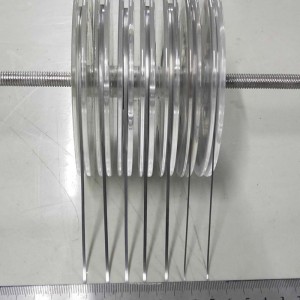MO Molybdenum bowl 2
Molybdenum application and science popularization
Molybdenum is a metal element, element symbol: Mo, English Name: molybdenum, atomic number 42, is a VIB metal. The density of molybdenum is 10.2 g / cm 3, the melting point is 2610 ℃ and the boiling point is 5560 ℃. Molybdenum is a kind of silvery white metal, hard and tough, with high melting point and high thermal conductivity. It does not react with air at room temperature. As a transition element, it is easy to change its oxidation state, and the color of molybdenum ion will change with the change of oxidation state. Molybdenum is an essential trace element for human body, animals and plants, which plays an important role in the growth, development and inheritance of human beings, animals and plants. The average content of molybdenum in the earth’s crust is 0.00011%. The global molybdenum resource reserves are about 11 million tons, and the proven reserves are about 19.4 million tons. Because of its high strength, high melting point, corrosion resistance and wear resistance, molybdenum is widely used in steel, petroleum, chemical, electrical and electronic technology, medicine and agriculture. 3 refractory metal: application of molybdenum
Molybdenum occupies the first place in the iron and steel industry, accounting for about 80% of the total consumption of molybdenum, followed by chemical industry, accounting for about 10%. In addition, molybdenum is also used in electrical and electronic technology, medicine and agriculture, accounting for about 10% of the total consumption.
Molybdenum is the largest consumer of iron and steel, and is mainly used in the production of alloy steel (about 43% of molybdenum in total steel consumption), stainless steel (about 23%), tool steel and high speed steel (about 8%), cast iron and roller (about 6%). Most of molybdenum is directly used in steel-making or cast iron after industrial molybdenum oxide briquetting, while a small part is melted into ferromolybdenum and then used for steel-making. As an alloy element of steel, molybdenum has the following advantages: improving the strength and toughness of steel; improving the corrosion resistance of steel in acid-base solution and liquid metal; improving the wear resistance of steel; improving the hardenability, weldability and heat resistance of steel. For example, stainless steel with molybdenum content of 4% – 5% is often used in places with serious corrosion and corrosion, such as marine equipment and chemical equipment.
The non-ferrous alloy is composed of molybdenum matrix and other elements (such as Ti, Zr, HF, W and re). These alloy elements not only play a role in solution strengthening and low-temperature plasticity of molybdenum alloy, but also form stable and dispersed carbide phase, which can improve the strength and recrystallization temperature of the alloy. Molybdenum based alloys are widely used in high heating elements, extrusion abrasives, glass melting furnace electrodes, spray coating, metal processing tools, spacecraft parts and so on because of their good strength, mechanical stability and high ductility.
2. Molybdenum resources in the world are mainly concentrated in the eastern edge of the Pacific Basin, that is, from Alaska and British Columbia through the United States and Mexico to Andes, Chile. The most famous mountain range is the Cordillera mountains in America. There are a large number of porphyry molybdenum deposits and porphyry copper deposits in the mountains, such as clemesk and Henderson porphyry molybdenum deposits in the United States, elteniente and chuki in Chile The porphyry copper molybdenum deposits in Kamata, El Salvador and pispidaka in Canada, andako porphyry molybdenum deposit in Canada and hailanwali porphyry copper molybdenum deposit in Canada, etc. China is also rich in molybdenum resources, with Henan, Shaanxi and Jilin provinces accounting for 56.5% of the total amount of molybdenum resources in China.
China is one of the countries with the most abundant molybdenum resources in the world. According to the data released by the Ministry of land and resources, by the end of 2013, China’s Molybdenum reserves were 26.202 million tons (metal content). In 2014, China’s Molybdenum reserves increased by 1.066 million tons (metal content), so by 2014, China’s Molybdenum reserves have reached 27.268 million tons (metal content). In addition, since 2011, China has discovered three molybdenum mines with a capacity of 2 million tons, including shapinggou in Anhui Province. As the largest country of molybdenum resources in the world, China’s resource base is more stable.








